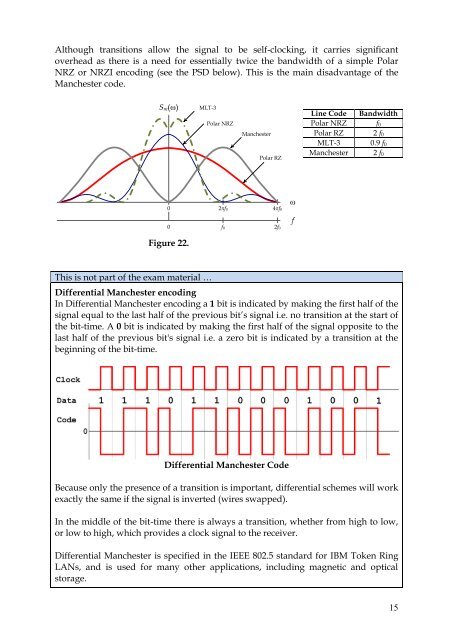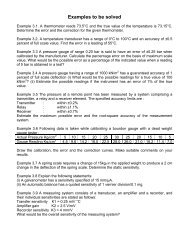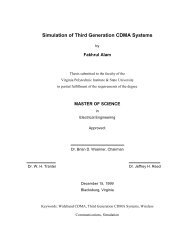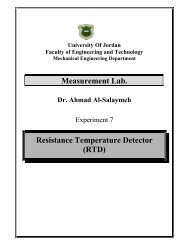Communications I Dr. Mohammed Hawa Introduction to Digital - FET
Communications I Dr. Mohammed Hawa Introduction to Digital - FET
Communications I Dr. Mohammed Hawa Introduction to Digital - FET
Create successful ePaper yourself
Turn your PDF publications into a flip-book with our unique Google optimized e-Paper software.
Although transitions allow the signal <strong>to</strong> be self-clocking, it carries significan<strong>to</strong>verhead as there is a need for essentially twice the bandwidth of a simple PolarNRZ or NRZI encoding (see the PSD below). This is the main disadvantage of theManchester code.S m (w)MLT-3Polar NRZManchesterPolar RZLine Code BandwidthPolar NRZ f 0Polar RZ 2 f 0MLT-3 0.9 f 0Manchester 2 f 00 2pf 04pf 00f 02f 0wfFigure 22.This is not part of the exam material …Differential Manchester encodingIn Differential Manchester encoding a 1 bit is indicated by making the first half of thesignal equal <strong>to</strong> the last half of the previous bit‟s signal i.e. no transition at the start ofthe bit-time. A 0 bit is indicated by making the first half of the signal opposite <strong>to</strong> thelast half of the previous bit's signal i.e. a zero bit is indicated by a transition at thebeginning of the bit-time.Differential Manchester CodeBecause only the presence of a transition is important, differential schemes will workexactly the same if the signal is inverted (wires swapped).In the middle of the bit-time there is always a transition, whether from high <strong>to</strong> low,or low <strong>to</strong> high, which provides a clock signal <strong>to</strong> the receiver.Differential Manchester is specified in the IEEE 802.5 standard for IBM Token RingLANs, and is used for many other applications, including magnetic and opticals<strong>to</strong>rage.15
















